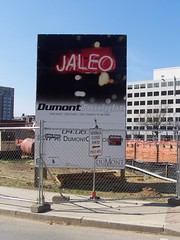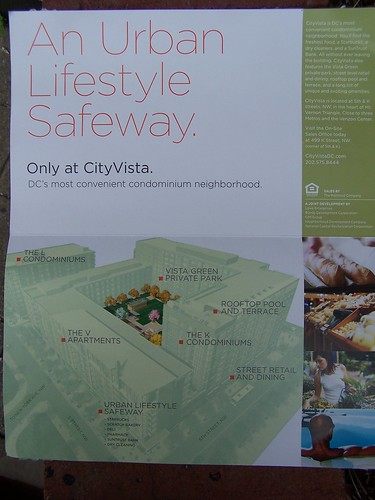Speaking of jobs and housing balance (and imbalance)

Urban living is hot and sexy, but people are focusing too often on the hot and sexy and not on what makes it so: compact development, access to destinations, and diversity. This works through an appropriate level of population density.
Urban revitalization in DC is working because of the steady employment engine at the core. Sure, Northern Virginia cleans DC's clock for military related jobs (Pentagon). And MoCo for bio-health related jobs (NIH). But we kick butt for the jobs relating to running and manipulating government (associations, lobbyists, lawyers).
One of the biggest problems with the Base Realignment and Closure Process is that it is really a sprawl producing exercise, because it is taking installations from connected places and relocating them to more disconnected places, places without very good transit connections, in the process offloading the cost of building the connecting infrastructure to local and state governments.
This comes up because of the desire of the City of Baltimore to capture some of the new residents that will be coming to the area because of BRAC-related expansion of Ft. Meade. But while Baltimore has great housing stock and recoverable neighborhoods, people will still have to commute. IF the offices moved into places in the city, then this would be a lot more realizable.
See this column from the Baltimore Sun, "Solutions for city, solutions for suburbs." And Baltimore has the national best practice resident attraction program, Live Baltimore.
I mention this because I have met a fair number of people who moved to DC because it is the hot and sexy trend, BUT they continued to work in the suburbs. Eventually, the commute "drove" them back to suburban living. (Fortunately they bought at the right time, so they made a lot of money through their "mistake.")


Hot babe from the City Vista direct mail piece.
From "Which reduces vehicle travel more: jobs-housing balance or retail-housing mixing?," Journal of the American Planning Association by Cervero and Ewing:
Which land-use strategy yields greater reductions in vehicular travel: improving the proximity of jobs to housing or bringing retail and consumer services closer to residential areas? We probe this question by examining the degree to which job accessibility is associated with reduced work travel and how closely retail and service accessibility is correlated with miles and hours logged getting to shopping destinations. Based on data from the San Francisco Bay Area, we find that jobs-housing balance reduces travel more, by a substantial margin. The article concludes by discussing policy measures that have been introduced in California to bring housing, workplaces, and retail centers closer together.
Labels: housing, land use planning, transportation planning, urban revitalization



0 Comments:
Post a Comment
<< Home